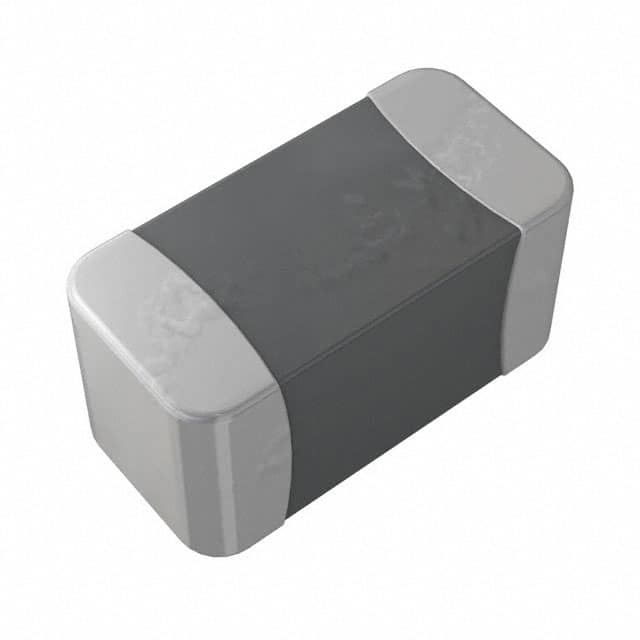NTCG104KH202HT1
Product Overview
NTCG104KH202HT1 belongs to the category of NTC thermistors. These are temperature-sensitive resistors that exhibit a decrease in resistance with an increase in temperature. The NTCG104KH202HT1 is commonly used for temperature sensing and compensation in various electronic circuits. It possesses characteristics such as high sensitivity, small size, and fast response time. The product is typically packaged in a small, cylindrical form and is available in various packaging/quantity options to suit different application needs.
Specifications
- Resistance at 25°C: 2kΩ
- Tolerance: ±10%
- Maximum Power Rating: 200mW
- Operating Temperature Range: -40°C to 125°C
Detailed Pin Configuration
The NTCG104KH202HT1 features a two-pin configuration, with one pin connected to each end of the thermistor. The pins are designed for easy integration into circuit boards and connections to other components.
Functional Features
- Temperature Sensing: Provides accurate temperature measurement and compensation.
- High Sensitivity: Exhibits a significant change in resistance with temperature variations.
- Fast Response Time: Reacts quickly to changes in temperature, making it suitable for real-time applications.
Advantages and Disadvantages
Advantages
- Small size allows for compact designs.
- High sensitivity enables precise temperature measurements.
- Fast response time for real-time temperature monitoring.
Disadvantages
- Tolerance of ±10% may require additional calibration in some applications.
- Limited operating temperature range compared to some alternative models.
Working Principles
The NTCG104KH202HT1 operates based on the principle of negative temperature coefficient (NTC), where its resistance decreases as the temperature increases. This property makes it suitable for use in temperature measurement and compensation circuits.
Detailed Application Field Plans
The NTCG104KH202HT1 is widely used in various applications, including: - Temperature Monitoring: Used in electronic devices to monitor and regulate temperature. - Thermal Management: Incorporated into power supplies and battery management systems for thermal protection. - Automotive Electronics: Utilized in automotive climate control systems and engine management.
Detailed and Complete Alternative Models
Some alternative models to NTCG104KH202HT1 include: - NTCG104EH202HT1: Similar specifications with enhanced tolerance for tighter temperature control. - NTCG104KH103HT1: Lower resistance variant suitable for specific temperature measurement requirements.
In conclusion, the NTCG104KH202HT1 NTC thermistor offers high sensitivity and fast response time, making it suitable for various temperature sensing and compensation applications across different industries.
Word count: 411
Lista 10 Vanliga frågor och svar relaterade till tillämpningen av NTCG104KH202HT1 i tekniska lösningar
What is the operating temperature range of NTCG104KH202HT1?
- The operating temperature range of NTCG104KH202HT1 is -40°C to 125°C.
What is the resistance value at 25°C for NTCG104KH202HT1?
- The resistance value at 25°C for NTCG104KH202HT1 is 2 kΩ.
Can NTCG104KH202HT1 be used for temperature sensing in automotive applications?
- Yes, NTCG104KH202HT1 is suitable for temperature sensing in automotive applications due to its wide operating temperature range and high reliability.
What is the typical response time of NTCG104KH202HT1?
- The typical response time of NTCG104KH202HT1 is in the range of milliseconds, making it suitable for fast temperature measurement and control.
Is NTCG104KH202HT1 suitable for battery management systems?
- Yes, NTCG104KH202HT1 is commonly used in battery management systems for monitoring and controlling the temperature of batteries.
Does NTCG104KH202HT1 exhibit a high level of stability over time?
- Yes, NTCG104KH202HT1 demonstrates excellent long-term stability, making it reliable for use in various technical solutions.
What is the power rating of NTCG104KH202HT1?
- The power rating of NTCG104KH202HT1 is typically around 100 mW, ensuring it can handle the expected power dissipation in most applications.
Can NTCG104KH202HT1 be used in HVAC systems?
- Yes, NTCG104KH202HT1 is suitable for use in heating, ventilation, and air conditioning (HVAC) systems for temperature monitoring and control.
What are the key advantages of using NTCG104KH202HT1 in technical solutions?
- The key advantages of NTCG104KH202HT1 include its high accuracy, small size, low cost, and compatibility with automated assembly processes.
Are there any specific precautions to consider when integrating NTCG104KH202HT1 into a technical solution?
- It is important to ensure proper thermal management and protection from moisture and contaminants to maintain the performance and reliability of NTCG104KH202HT1 in technical solutions.


